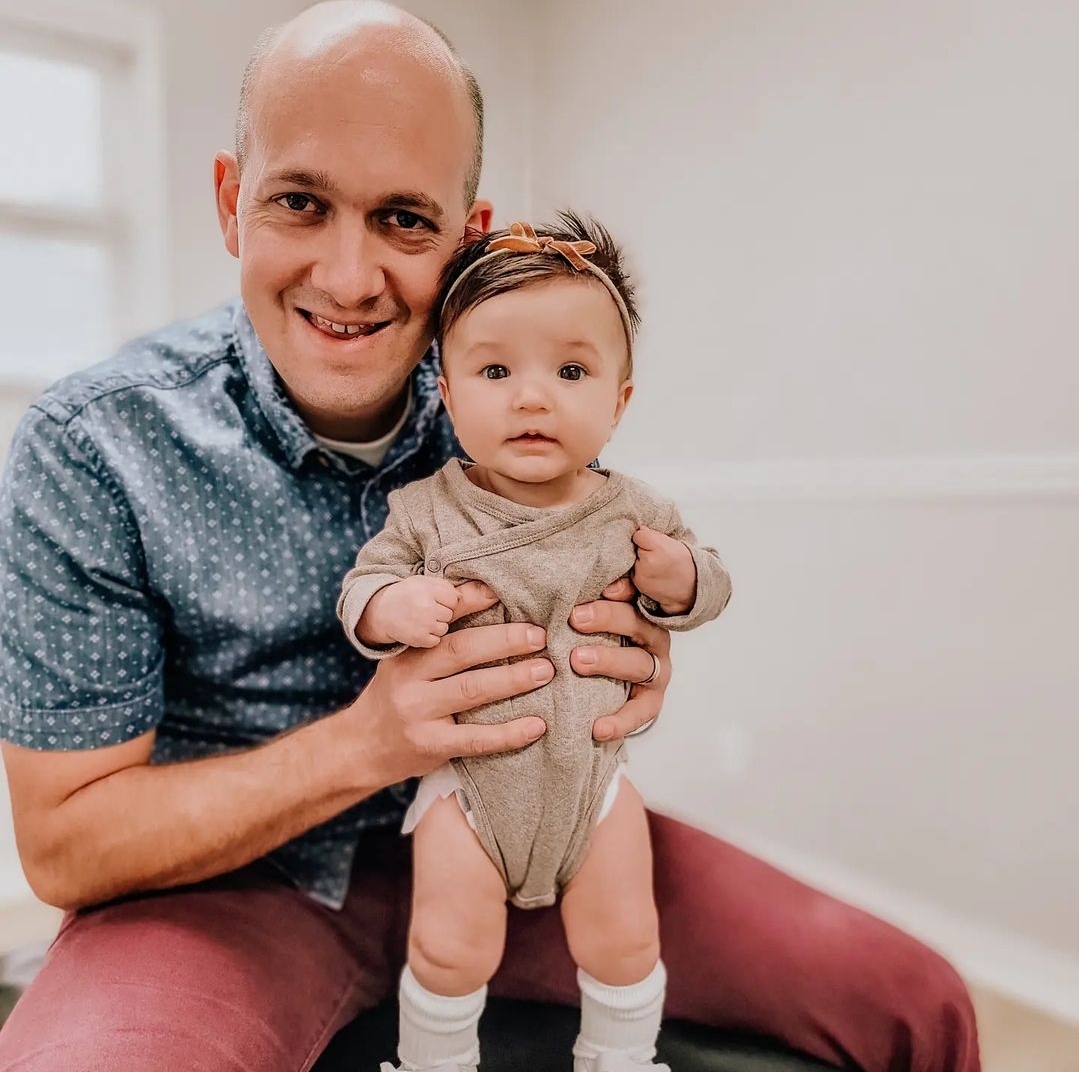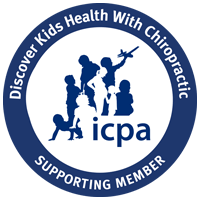
Everywhere I turn, whether looking at seminar speaker topics within my profession or reading recommendations and comment threads in holistic mom’s groups on Facebook, tongue ties are being talked about more than ever and getting the ‘blame’ for countless pediatric health conditions.
In this article, we’ll break down the science behind your baby’s tongue tie and not just the potential difficulties they can cause with breastfeeding, speech, and neurodevelopment. Still, we’ll go way deeper than most do and investigate why we’re seeing so many of them in practice today and what the true root cause of all this trouble may be.
WHAT IS A TONGUE-TIE?
A tongue tie, also known as ankyloglossia, is a condition that affects some newborns where the strip of tissue that anchors the tongue to the floor of the mouth is too short, restricting movement and function of the tongue. This can make it difficult for a baby to breastfeed effectively, as they may be unable to properly latch and nurse effectively.
Despite the common and colloquial use of the term “tongue-tied,” it is not solely related to speech. Additionally, a baby’s tongue tie does not just have negative health consequences for the infant but potentially for the mom as well.
You may also commonly see this condition referred to as TOTs (Tethered Oral Tissues), which include discussion of the frenulum and other connective tissues of the mouth and jaw.
HOW COMMON IS A BABY’S TONGUE-TIE?
While the exact prevalence of tongue tie is unknown, some put it between 3-5% and others as high as 11% or more. There is a lot of debate on both sides of the conversation, with some feeling it’s grossly misdiagnosed and others feeling it’s overly diagnosed and corrected.
Interestingly, just like conditions such as autism and ADHD, it’s more common in boys. We’ll discuss the potential science behind this correlation later when we discuss the cause of your baby’s tongue tie.
A tongue tie is often, but not always, accompanied by a lip tie, a condition where the piece of tissue connecting the upper lip to the upper gum restricts the mouth’s mobility if it’s too thick or too tight.
Much like autism, there is a lot of discussion as to whether the increased rate of ankyloglossia is a real phenomenon or merely reflects increased awareness and parental reports. When we get into the science and discussion of potential causes, I think it will be easy for parents to see that the increase in incidence rate is rather easily (and unfortunately) explained by the increased rates of maternal distress, birth trauma, and early exposure to toxins in our children today.
WHAT ARE THE SYMPTOMS OF A TONGUE TIE?
Some babies with a tongue tie have difficulty opening their mouth wide enough to effectively latch and breastfeed, leading to difficulties such as:
- Have difficulty attaching to the breast or staying attached for a full feed
- Be unsettled and seem to be hungry all the time
- Not gain weight as quickly as they should
- Make a “clicking” sound during feeding
Many of the signs and symptoms of a tongue tie mirror those of general colic and neuro-gastric distress in a child, so your child’s provider must be able to delineate between the two and, most importantly, what the root cause is of your child’s nursing and sleep challenges.
Since breastfeeding is a two-way street and a true neuromuscular connection between mom and baby, a baby’s tongue tie can lead to these challenges for mom as well:
- Sore or cracked nipples
- Low milk supply
- Mastitis
Then from here, as the child ages, many natural health practitioners have begun to link things like gross motor and fine motor development, speech delays, sleep disturbances, tooth decay, and even sensory integration disorder to the presence of a tongue tie.
In today’s world, where this discussion has become so popular, it’s not too uncommon for children three and older or even adults to have a tongue-tie revision to try and correct some potentially related issues like speech, sensory processing, and sleep disturbances.
WHAT CAUSES A BABY’S TONGUE TIE?
Well, parents, if you thought the debate between over or under-diagnosing a baby’s tongue tie was a hot topic, wait until we dive into potential causes! Like all articles on our PXDocs.com site, we’ll be sure to dive deep into the science and neurology behind it all and explain things in a simple and straightforward manner so you can best help your child.
In short, most traditional medical doctors and pediatricians take the same approach to explaining the cause of tongue ties as most other conditions. They just blame genetics without looking too deeply into things.
From there, many natural health and integrative practitioners blamed a tongue tie on mutations associated with the MTHFR genes, leading to problems with the folate absorption and utilization. Studies like this one examine whether increasing folic acid amounts of things such as prenatal vitamins, which were originally done to reduce the prevalence of neural tube defects, may at least be partly to blame.
At PX Docs, our specialty is neurology and neurodevelopment, so we investigate and look at things even beyond things, such as soft tissues, nutrients, and so forth.
The tone of the central nervous system is the primary determinant of the tone of the muscular and soft tissue systems. So put simply, if the mom and infant’s nervous system is first stuck in a sustained sympathetic fight-or-flight dominant tone, so will the soft tissues such as the frenulum, mouth, and jaw.
Whether traditional medical or more holistic and integrative, most of the healthcare world will always look to things like physiology and chemistry first. However, we all know that true health and development is that everything begins with the health and function of the nervous system first.
World-renowned cellular biologist and researcher Dr. Bruce Lipton puts it this way:
“The function of the nervous system is to perceive the environment and coordinate the behavior of all other cells.”
If we take that understanding of the vital role the nervous system plays in control and coordination and apply it to this conversation around your baby’s tongue and soft tissues, such as the frenulum, it’s pretty easy to see which of these potential causative issues may arise first.
And finally, this means that the best causative explanation for your baby’s tongue tie is exactly the same as nearly every other condition – it’s most likely a combination and multitude of issues at hand creating what we refer to as The Perfect Storm.
When you’ve finished this article, be sure to click over to the Perfect Storm article and learn about the combined effect that things like maternal distress during pregnancy, birth intervention, trauma, and early childhood exposure to stress and toxicity can have on creating things such as subluxation and dysautonomia.
EXPLORING THE CONNECTION BETWEEN SUBLUXATION AND TOTS
The way we explain subluxation to parents is that the first two (2) components, misalignment and fixation of the vertebra, are more biomechanical and musculoskeletal in nature. And then, the third component of subluxation is where the neuromuscular and overall neurological component comes into play.
To explore the potential connection between your baby’s tongue tie and subluxation, we must also identify the incidence of subluxation (fixation, misalignment) in infants. This incredible osteopathic study here found that a whopping 99 out of 100 healthy newborns did have an incidence of somatic dysfunction, which is the osteopathic term for chiropractic subluxation.
Additionally, the somatic dysfunctions and subluxations were predominantly found in the upper cervical and cranial regions, which are known to control neuromuscular tone and function of the soft tissues controlling the mouth, jaw, and tongue.
The correlation between subluxation and things like an infant’s tongue tie is, therefore, quite simple and direct, and we absolutely need more research to be done in the coming years.
TREATMENT AND CARE OPTIONS FOR A BABY’S TONGUE-TIE
Since breastfeeding and all of the nutritional, neurological, and emotional development that comes with it is vital to both short and long-term health for children, most parents elect to have a tongue-tie revision surgery done by a pediatric holistic dentist.
As with all medical procedures and surgeries, however, there are multiple things to be considered by parents and providers when making this decision.
When we factor into the discussion things like maternal distress, abnormal fetal positioning, birth trauma, and the resultant subluxation and sympathetic dominance, it’s important to consider that increased tension and thickness of the soft tissues may be a protective and compensatory response to the neurological tone of the entire system.
That means if the tongue tie is surgically revised without consideration of subluxation and sympathetic dominant neurology likely at play, and a Pediatric Chiropractor is not first consulted… things could be made worse initially instead of better after the surgery.
That would be the case if we factor in that the original cause and neuromuscular tone causing all the problems would still not have been addressed. Now the child also has to deal with the pain and restrictions that come with the post-surgery response the body will likely go through.
The take-home point from this session is simple – please be sure to consult with a trained PX Doc and Pediatric Chiropractic expert before the surgical revision if you can, and most assuredly afterward as well to help reduce the associated neuromuscular tension, subluxation, and biomechanical dysfunction.
For some children, surgical revision and chiropractic care are ultimately needed for the best short and long-term results.
It is also important to note that the vast majority of trained Pediatric Chiropractors are trained and proficient in various techniques such as Sacro-Occipital Technique (SOT), NeuroTonal work, and even Cranial-Sacral Therapy (CST).
There are a few other professions, such as massage therapists, who can get additional training in craniosacral therapy and myofascial release. Still, it’s important for parents to know that only a trained Pediatric Chiropractor like those found in our PX Docs Network are licensed and trained to provide the kind of in-depth adjustments needed to improve neurological function beyond just soft tissue work more significantly.
FIND YOUR LOCAL PEDIATRIC CHIROPRACTOR
Whether your child has had a surgical tongue-tie revision already or not, a consultation and examination with one of our trained PX Docs is an absolute must for this condition.
Again and again, we find that a baby’s tongue tie comes with moderate to severe tension, subluxation, and dysautonomia. You can see an example of this tension and neurological interference on the INSiGHT Scan below, which was a recent infant patient who had already had tongue-tie revision surgery.
You can see clearly how much stress and dysfunction has built up on this patient’s upper cervical spine, including what is called a “counter-torque” tension pattern where C1 (atlas) is misaligned in one direction and C2/C3 (axis) in the opposite direction. That subluxation pattern is the one associated with the most amount of neurological tension, dysfunction, and dysautonomia.
To learn more about these incredible INSiGHT Scans that help determine if subluxation is at play for your child, check out this article here.
And then, most importantly, to find your local PX Doc and get your consultation and exam scheduled right away, head over to our Provider Directory and simply plug in your zip code or city and state. Our doctors are absolute experts in this condition and can provide you with the Hope, Answers, and Help you’ve been searching for!
ARTICLE SOURCES
Waddington EL, Snider KT, Lockwood MD, Pazdernik VK. Incidence of Somatic Dysfunction in Healthy Newborns. J Am Osteopath Assoc. 2015 Nov;115(11):654-65. doi: 10.7556/jaoa.2015.136. PMID: 26501758.
Amitai Y, Shental H, Atkins-Manelis L, Koren G, Zamir CS. Pre-conceptional folic acid supplementation: A possible cause for the increasing rates of ankyloglossia. Med Hypotheses. 2020 Jan;134:109508. doi: 10.1016/j.mehy.2019.109508. Epub 2019 Nov 18. PMID: 31835174.


